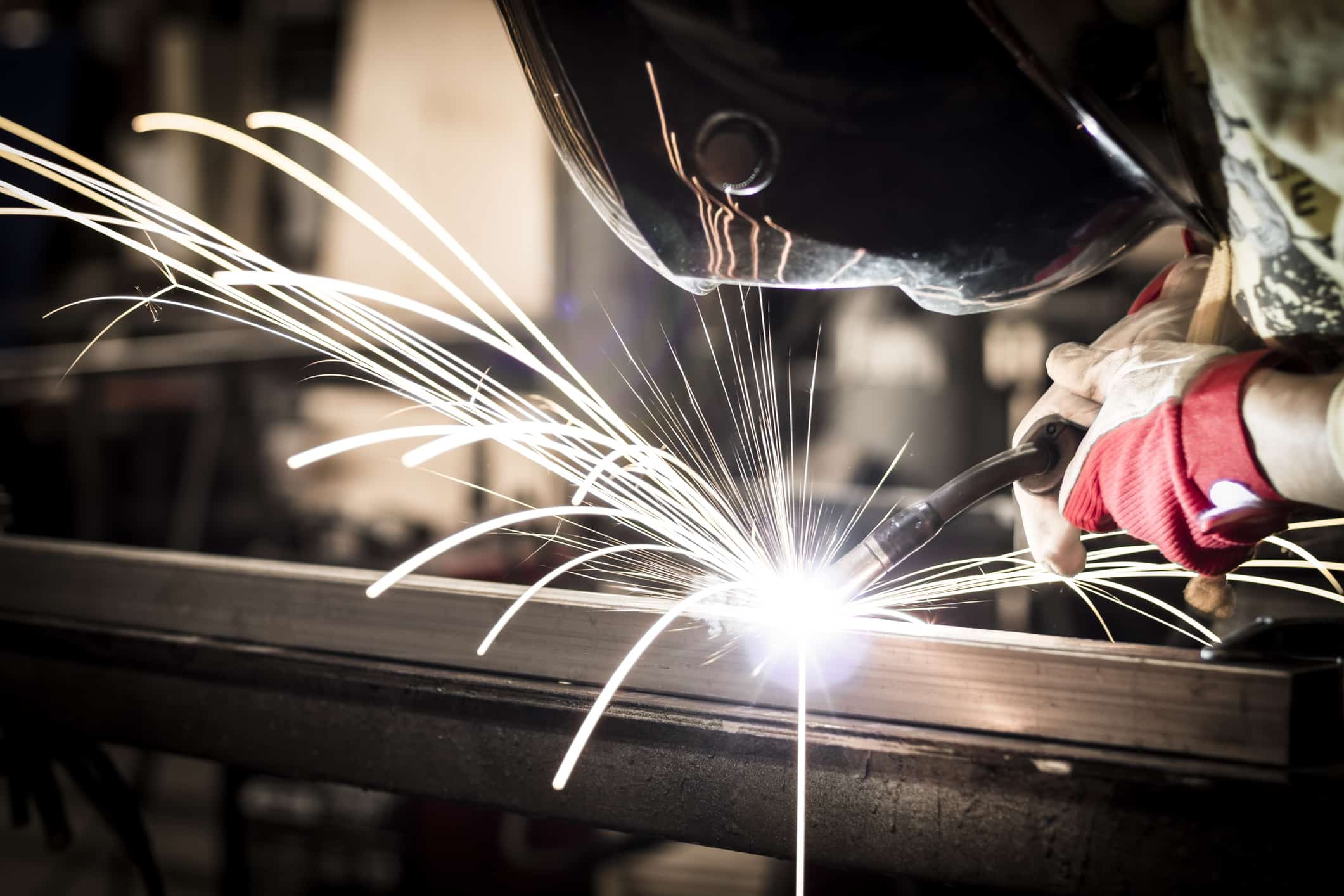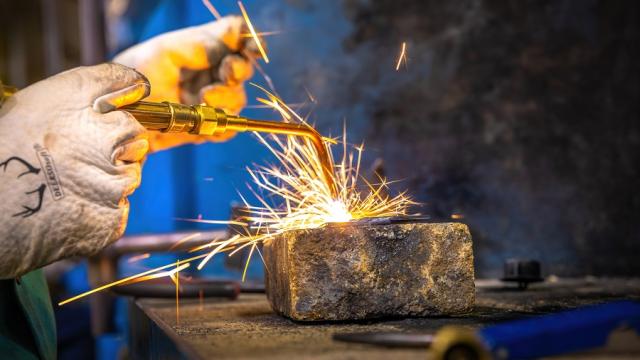What to learn about overheating prevention from Montana Mobile Welding and Repair
Wiki Article
Usual Welding Repair Work Issues and Just How to Address Them Successfully
Welding fixings frequently come across a series of concerns that can endanger the stability of the end product. Common troubles consist of inadequate infiltration, porosity, and misalignment, among others. Each problem presents unique challenges that require details techniques for resolution. Comprehending these problems is crucial for welders intending to boost their abilities and end results. This conversation will certainly discover these usual welding repair work problems and reliable methods to resolve them.Insufficient Penetration
Inadequate infiltration takes place when the weld steel stops working to totally fuse with the base product, leading to weak joints and potential architectural failings. This problem often originates from not enough warmth input, inaccurate electrode angle, or improper welding speed. Welders may encounter poor infiltration due to a miscalculation of the needed specifications for a particular product density or type. Furthermore, contamination on the base material's surface area can impede effective bonding, aggravating the issue. To attend to poor penetration, welders should guarantee suitable settings on their equipment and maintain a clean work surface. Normal inspection of welds is recommended to determine any deficiencies early, enabling for prompt corrections and the prevention of compromised architectural honesty in welded assemblies.Porosity
Porosity is a typical issue in welded joints that shows up as tiny gas bubbles trapped within the weld metal. This problem can compromise the honesty of the weld, leading to reduced stamina and potential failing under anxiety. Fabrication. Porosity typically develops from contamination, wetness, or improper welding methods, which allow gases to escape right into the molten weld swimming pool. To deal with porosity, welders should ensure proper surface area prep work, preserve a clean working atmosphere, and make use of appropriate welding specifications. Additionally, picking the appropriate filler material and shielding gas can minimize gas entrapment. Routine inspection and screening of welds can assist determine porosity early, ensuring prompt rehabilitative actions are taken, consequently maintaining the high quality and reliability of the welded frameworkMisalignment
Misalignment in welding can arise from numerous variables, consisting of incorrect setup and thermal expansion. Comprehending the origin is crucial for reliable resolution. Several correction methods are readily available to straighten parts and guarantee structural honesty.Root causes of Imbalance
Welding misalignment typically stems from a selection of underlying issues that can compromise structural honesty. One primary reason is improper fit-up of elements prior to welding, which can bring about gaps and uneven surfaces. Variants in thermal growth during the welding procedure can additionally cause distortion, specifically if the materials being joined have various coefficients of development. In addition, inadequate clamping and fixturing might fall short to hold elements securely in position, causing motion throughout welding. Inadequately conserved equipment, including welding devices and tools, might present incongruities in the weld bead, more adding to imbalance. Ultimately, operator mistake, stemming from inadequate training or experience, can also play a considerable duty in producing misaligned welds.Correction Strategies Available
Attending to imbalance successfully requires a combination of rehabilitative strategies customized to the specific concerns at hand. One common approach is the use of jigs or fixtures to hold parts in the right setting during welding, ensuring constant alignment. In addition, preheating the products can help in reducing distortion and improve fit-up. For substantial misalignment, mechanical adjustment strategies, such as utilizing hydraulic jacks or clamps, can be employed to fix the placement prior to welding. Post-weld warm therapy may likewise be required to soothe stress and anxieties created by imbalance. Lastly, careful assessment and change during the arrangement stage can avoid misalignment issues from becoming substantial problems, advertising a smoother welding process and enhancing total structural honesty.Distortion
Distortion is a typical difficulty in welding that can emerge from numerous aspects, including irregular heating & cooling. Understanding the reasons for distortion is crucial for executing reliable avoidance techniques. Resolving this issue not only enhances structural stability but additionally improves the total high quality of the weld.Root causes of Distortion
When based on the extreme heat of welding, materials often undertake adjustments that can cause distortion. This sensation primarily develops from thermal growth and tightening during the welding process. As the weld area warms up, the material increases; upon cooling, it gets, which can develop interior tensions. In enhancement, uneven More Info heating across a work surface can exacerbate these tensions, leading to warping or flexing. The type of material likewise plays a significant function; metals with varying thermal conductivity and coefficients of development might react in different ways, resulting in unforeseeable distortions. Inadequate joint design and poor fixturing can contribute to misalignment throughout welding, raising the possibility of distortion. Comprehending these reasons is essential for effective welding repair and avoidance techniques.Avoidance Techniques
Efficient avoidance techniques for distortion during welding concentrate on regulating warmth input and making certain appropriate joint layout. Preserving a regular heat input aids to lessen thermal development and tightening, which can result in distortion. Making use of strategies such as pre-heating the workpiece can also reduce the temperature level slope, promoting uniform heating. In addition, selecting ideal joint layouts, such as T-joints or lap joints, can enhance stability and decrease stress concentrations. Implementing proper fixturing to secure the workpieces in position additionally help in keeping placement throughout the welding process. Ultimately, staggered welding sequences can distribute heat much more uniformly, protecting against localized distortion. By using these approaches, welders can considerably lower the likelihood of distortion and improve the overall high quality of their welds.Breaking
Fracturing is an usual issue encountered in welding fixings, frequently resulting from numerous factors such as inappropriate air conditioning rates, material choice, or poor joint preparation. The incident of fractures can substantially compromise the honesty of the weld, resulting in potential failings during procedure. To resolve this problem, welders need to initially analyze the origin, making sure that materials work and suitably selected for the specific application. Additionally, managing the air conditioning price throughout the welding procedure is important; fast cooling can induce tension and lead to fracturing. Correct joint design and preparation likewise add to lessening the danger. Applying these techniques can enhance weld high quality and durability, ultimately lowering the likelihood of cracking in completed weldments.
Incomplete Fusion
A considerable issue in welding repair work is you can try these out incomplete blend, which occurs when the weld metal does not appropriately bond with the base material or previous weld passes - Welding. This problem can cause weak points in the joint, potentially endangering the integrity of the bonded structure. Aspects contributing to insufficient fusion include inadequate warm input, inappropriate welding method, and contamination of the surface areas being joined. To address this concern successfully, welders should assure proper pre-weld cleansing and surface area prep work, along with adjust their welding parameters to attain sufficient infiltration and combination. Routine examination throughout the welding procedure can likewise help identify incomplete fusion early, enabling prompt corrective steps to improve the general quality of the weldOverheating
While welding fixings can boost structural integrity, overheating offers a significant obstacle that can cause material deterioration. Excessive warm during welding can alter the mechanical residential or commercial properties of metals, leading to reduced stamina, boosted brittleness, and bending. This phenomenon is particularly essential in high-stress applications where architectural dependability is paramount. Recognizing getting too hot can include visual assessments for staining or distortion, as well as checking temperature level during the welding process. To reduce the dangers connected with getting too hot, welders must utilize ideal methods, such as managing warm input, readjusting traveling speed, and making use of appropriate filler materials. Additionally, executing pre- and post-weld warm therapies can aid restore product residential properties and boost the overall quality of the repair work, making certain long-lasting performance and safety and security.Frequently Asked Concerns
What Are the Usual Indicators of a Welding Flaw?

How Can I Test My Welds for Top quality?
To check welds for top quality, one can utilize visual evaluations, ultrasonic screening, and radiographic techniques. Each strategy ensures architectural integrity, determines defects, and validates adherence to specified requirements, eventually boosting discover here the reliability of the bonded joints.What Safety and security Precautions Should I Take While Welding?
When welding, one must focus on security by putting on ideal individual protective devices, guaranteeing correct ventilation, protecting flammable products away, maintaining a tidy office, and recognizing surroundings to stop injuries and mishaps.Can I Repair a Weld Without Renovating the Entire Joint?
Fixing a weld without redesigning the entire joint is feasible, depending upon the damage (Montana Mobile Welding and Repair Belgrade Welding). Methods such as grinding, including filler material, or utilizing a welding process can successfully attend to details problems while preserving the surrounding structureWhat Tools Are Necessary for Effective Welding Repairs?
Essential tools for efficient welding repairs include a welding maker, cable brush, mill, safety equipment, clamps, and filler materials. Each tool plays a vital function in ensuring high quality and security throughout the repair process. Porosity commonly develops from contamination, moisture, or improper welding techniques, which enable gases to get away into the molten weld pool. Badly conserved devices, consisting of welding makers and tools, might present disparities in the weld grain, additional contributing to imbalance. When subjected to the extreme warmth of welding, materials commonly undergo adjustments that can lead to distortion. Fracturing is an usual issue encountered in welding repair work, commonly resulting from numerous aspects such as inappropriate air conditioning prices, product choice, or poor joint prep work. A considerable concern in welding repair services is insufficient fusion, which takes place when the weld metal does not properly bond with the base product or previous weld passes.Report this wiki page